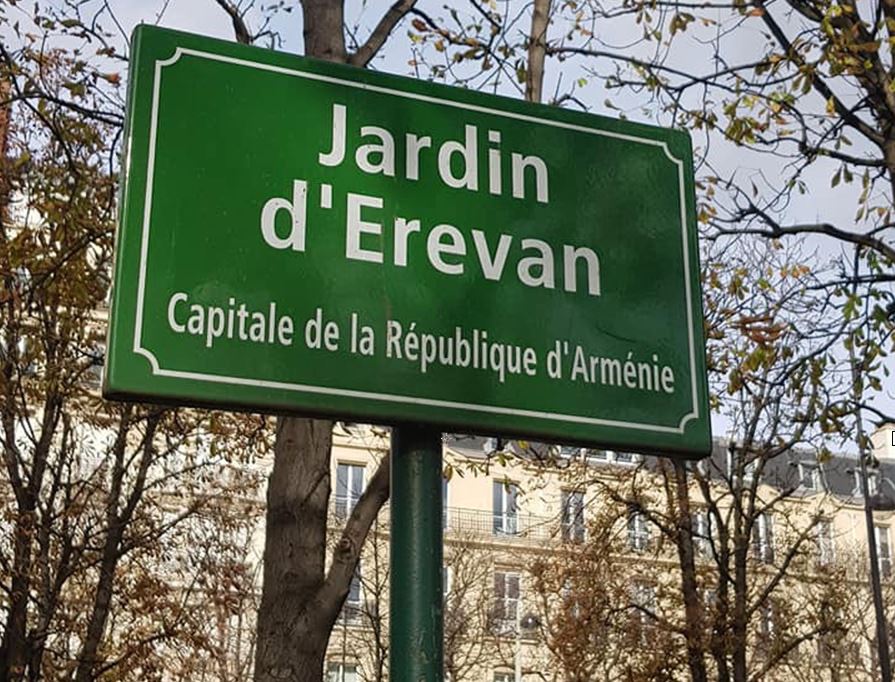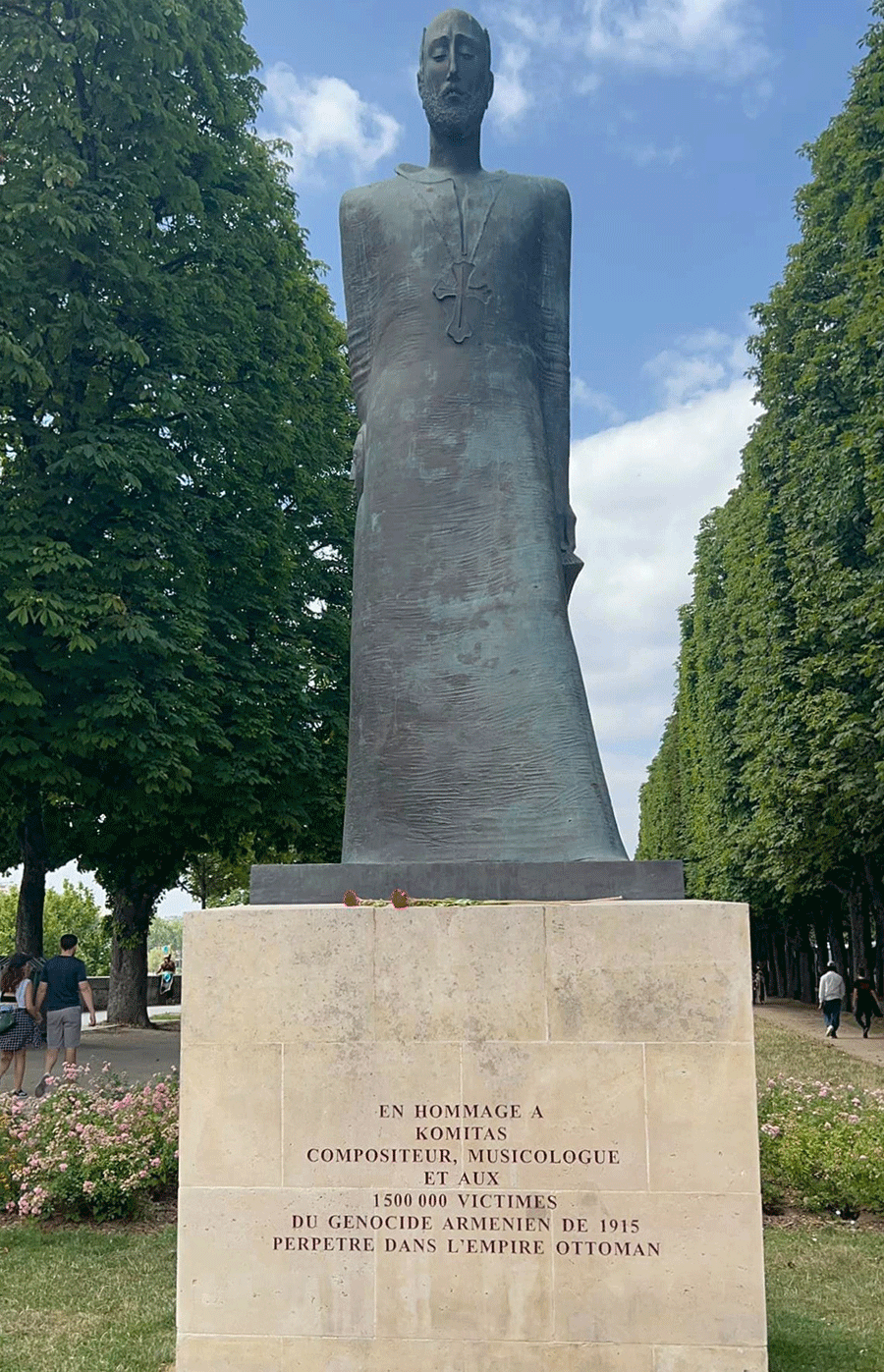by John Dekhane
The Armenian Weekly
Ernest Hemingway once said: “There are only two places in the world where we can live happy—at home and in Paris.” For thousands of Armenian Genocide survivors, Paris became their refuge and home. In the 1920s, more than 50,000 Armenians lived in France. Among them were writers, artists and poets, but many were laborers, working hard to provide for their families. As the Armenian community grew, the newcomers became members of French society, but they never forgot their homeland and proudly preserved their history, traditions and culture.
So many Armenians are now part of France’s collective memory. Exceptional artists like Charles Aznavour and Sylvie Vartan entertained millions of French people. Talented footballers like Youri Djorkaeff enabled the French football team to win its first World Cup title in 1998. During World War II and the German occupation of France, resistance fighters like Missak Manouchian and Louise Aslanian defied the Nazis and sacrificed their lives to defeat tyranny. Today, around 650,000 members of the Armenian diaspora live in France, and more than 150,000 French Armenians live in Paris, where they perpetuate their unique heritage.
Let’s start our little visit to Paris in the eighth arrondissement near the famous Pont des Invalides. Along the right bank of the Seine River is a beautiful and peaceful park named “Le Jardin d’Erevan,” which means the Garden of Erevan (Erevan is the French name for Yerevan, the capital of Armenia). This lovely park was inaugurated in 2009, in the presence of the legendary Charles Aznavour and Helène Ségara, a popular French singer of Armenian and Italian descent. In the Jardin d’Erevan stands a monumental statue of Komitas, who was an Armenian priest, musicologist, composer, singer and choirmaster. He was the founder of the Armenian national school of music and is recognized as one of the pioneers of ethnomusicology. The imposing statue commemorates the victims of the Armenian Genocide and the Armenian heroes who have fought and died for France.
Read also
We continue our exploration of Paris in the neighboring ninth arrondissement. While walking down rue Lamartine, you smell Mediterranean aromatic herbs and Middle Eastern spices. These familiar scents may bring back old memories and make your mind travel back in time. At the N°6 of rue Lamartine is an extraordinary Armenian grocery store founded in 1925 by the Heratchian brothers. For a century, this colorful and timeless place has sold exquisite spices, herbs and products from countries including Egypt, Greece, Morocco and, of course, Armenia. Many French Armenians have been going to this unique store for decades, first with their grandparents and now with their grandchildren. The grocery store “Heratchian Frères” is open from Tuesday to Saturday, from 9 a.m. to 7 p.m.
After awakening our taste buds at “Heratchian Frères,” let’s head towards the rue Bleue, which is five minutes away by foot, for lunch. The Armenian restaurant we are looking for is known by all French Armenians of Paris, but it’s a hidden treasure. Some tourists have spent ages looking for it in vain. This mysterious restaurant is named “La Maison de la Culture Arménienne” (translation: The House of Armenian Culture), at N°17 rue Bleue (9th arrondissement). When you arrive at this address, there will be no sign of a restaurant, other than an ordinary Parisian residential building and a large wooden door with a keypad. No code is needed to enter the building. You must push the button at the bottom of the keypad, wait for the door to click and let yourself in. After crossing the residential courtyard, you will reach the back building and see Armenian and French flags above a doorway marked “Maison de la Culture Arménienne.” From the moment you walk through that door, you will be welcomed by the smell of Armenian cuisine. Located on the first floor, this secret restaurant is like no other, and the food is amazing. Having lunch or dinner at the “Maison de la Culture Arménienne” is a fantastic culinary experience that you will never forget. The restaurant is open every day, except Sunday, from 12 p.m. to 3 p.m. and from 7 p.m. to 11 p.m.
Let’s pursue our pleasant journey in Paris in the 16th arrondissement and visit another hidden treasure of the French capital. At N°11 of the Square Alboni stands an elegant residential building that was designed by a famous French Armenian architect, Léon Nafilyan. This residential building seems like an ordinary building, but it’s not. Since 1928, this building has housed the Nubar Library (Bibliothèque Nubar), which holds Europe’s largest collection of Armenian books, periodicals and personal archives of Ottoman Armenian individuals. Founded by Boghos Nubar Pacha, the mission of the library was to collect and preserve every document or publication in Paris regarding the Western Armenian world. Today, the Nubar Library is one of the richest documentation centers on the history of the Ottoman Armenian world and the Armenian Diaspora. The library holdings currently include 43,000 printed books, 800,000 archival documents and 10,000 original photographic prints. In order to visit the Nubar Library, make an appointment by email, [email protected], or by phone, +33 1 45 24 72 77.
We conclude our expedition through Paris in the 20th arrondissement at Père Lachaise Cemetery. With more than 3.5 million visitors annually, the Père Lachaise Cemetery is the most visited cemetery in the world. Among the famous people buried in this cemetery are Jim Morrison, Frédéric Chopin, Édith Piaf, Marcel Proust and Oscar Wilde. But let’s head towards Division 94 and search for the statue of General Andranik. Born in 1865, Andranik Ozanian was an Armenian military commander and a key figure of the Armenian National Movement. This national hero died from angina on August 31, 1927, in California, and was initially buried at the Ararat Cemetery in Fresno. After the General’s first funeral, the plan was to take his remains to Armenia for final burial, but when they arrived in France, the Soviet authorities refused to give permission to transport them to Armenia. After a second funeral service held in the Armenian Church of Paris, General Andranik was buried at the Père Lachaise Cemetery on January 29, 1928, and he remained there for 72 years. In February 2000, the General’s remains were finally taken to Armenia and buried at Yerablur in Yerevan. Today, at the Père Lachaise Cemetery, a monumental equestrian statue of General Andranik stands where this true national hero was buried.




























































